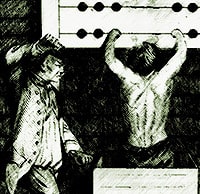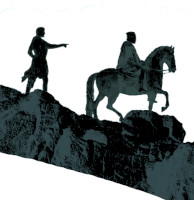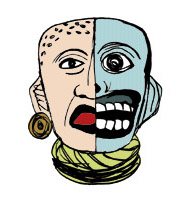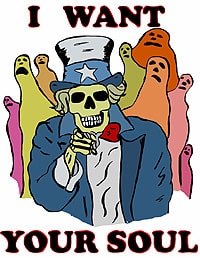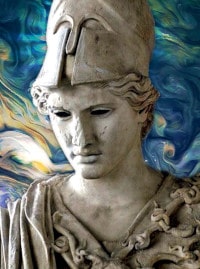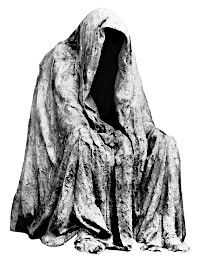Roman Military Strength
Crew: 3 to 10 men, usually of boats or guns
Troop: 20 men of any arm, foot, horse or naval
Century: 100 men or 5 troops
Battle: 500 men or 5 centuries
Cohort: 2,500 men or 5 battles
Legion: 7,500 men or 3 cohorts
Naval personnel are are not grouped above a battle, which is the compliment of a steam battle ship, with the largest ships of sail crewed by 4 centuries.
Horsemen are never grouped above a battle.
A legion is ideally brought to a strength of 10,000 with attached battles of horse and allied warriors, troops and centuries of gladiators, and crews of artillery men.
The Praetorian Guard was re-instituted in after much ill-fame in antiquity in 1609. The occasion was the Gunpowder Conspiracy, in which Frisian and Turkish Pirates attempted to insure the succession of a corrupt North Atlantic Fleet Commander to the post of Caesar by the destruction of the succeeding Caesar on the passing of Augustus Britannicus The 12th, called “Scourge of the Narrow Seas.” This plot was narrowly foiled at the London Docks by a Marine detachment.
Praetorian Commanders are prohibited from taking office.
Each Caesar has a Praetorian Guard of a single legion. This legion has a Legate or commander.
Praetorian Legions are 10,000 strong, having 4 battles of horse and 1 great battle of artillery. Such a legion is only gathered in full strength by Augustus. The great battle of artillery, the first battle of foot and first battle of horse typically attend the person of the Caesar or Augustus. The remaining 14 battles of foot serve to guard the Tribunes of the largest provinces. The remaining 3 battles of horse are assigned to either frontier service or sparsely populated provinces, or attached to battles in major cities plagued with mob activity. Praetorian guards under each Caesar guard his person and the person of his tribunes. These also collect the taxes in the name of the tribune and assist the Lictors in law enforcement duties beyond their capacity. In such cases the commander of a Praetorian unit out ranks his equal among the Lictors.
Praetorian uniforms are of purple wool and/or cotton depending on their area of operations. Boots and belts are black leather. They are other wise armed as army personnel of the following types:
-All praetorian infantry are grenadiers
-All praetorian cavalry are cuirassers
…
Lictors
The Honorable Order Lictors serve the Censor of each district. Depending on the size of a district the censor will have at his command the following body of men to enforce the law, apprehend and punish law breakers and to contain the mobs.
Frontier Post = crew
Village = crew
Town = troop
City = battle
Capital = cohort
Metropolis = legion [such massive cities as New York, Mexico City, London and Saint Paul, Brazil]
Lictors dress in cotton, linen and wool, dyed gray, pants, shirt, boots, jackets with vest worn over jacket.
There flags and badges are embroidered in a gray fascine [ax in a bundle of sticks] on a red background.
Lictors are ranked and armed like so:
-Lictor: stick, padded vest and helmet with shield typically worn on the back. In rural settings the stick is exchanged for a staff.
-Corporal of a crew: mace, vest, leather helmet and shield
-Corporal Torturer: flail, leather vest and helmet, knives, fetters, bores, screws and brands worn in a pack. This is the rank of lictor who acts as a lanista in the arena.
-Corporal Executioner: ax, leather vest and helmet, butcher knife
-Corporal Investigator: saber, lasso, pistol and fetters, leather vest and gray slouch hat, horse in rural settings
-Sergeant of a troop: half sword, pistol, brass helmet and cuirass
Wearing the cuirass over jacket is considered oppressive. The patrician officer class will not put up with it.
-Captain of a century: saber, pistol, steel helmet, iron lined leather vest, and quarter horse
-Commander of battle: same as captain but with gray peaked hat and no vest, mounted on a charger
-Commander of a Cohort: same as battle commander but with red cuffs on jacket
-Legate of a legion: same as commander but with red collar
…
Legions
These are dressed in red cloth and black leather.
Their flags are a silver eagle on a blue field.
Ranks
Legionnaire: shoes, pants, shirt, jacket, vest, trousers, black canvas round hat with red felt band, belt, paper cartridge boxes and bayonet on belt, backpack with rations, bottles and bedroll, armed with a musket and bayonet, one may were a feather in the cap, which has pierced rows for this in the round bill, for every foe slain.
Riflemen are legionnaires trained and armed with a more accurate slower loading rifle and bayonet. These men wear green sashes and soft boots rather than hard shoes. One crew, being half of First Troop, in each century, are riflemen.
Flagbearer: a flag bearing veteran, assigned to First Troop, 1 to each century, armed with a pistol and grenades.
The first troop of each century is kept at full strength, so the musketeers may act as the Captain’s guard and the riflemen as snipers and skirmishers, this unit often being split.
Grenadier is a legionnaire six feet or above, armed with grenades and wearing a spiked leather helmet. There is typically one century of these men to a cohort to act as shock troops, guard the commander and discipline ordinary soldiers.
Corporal of a crew: armed with a rod and pistol, wearing a triangular hat.
Sergeant of a troop: armed and dressed as a corporal but wearing a brass gorget.
Horsemen and officers dress in linen and silk with wool over garments and beaver hats in various shapes. They all wear shirt, vest, jacket and cape with gorget and high hard riding boots.
These men are all of the patrician class, with a horseman superior over footmen by one rank.
Horseman: Top hats are banded in bear hide. Armed with 2 pistols and a saber.
Lancer: The First Century of each horse battle are lancers. Lancers have saddle carbines for dismounting and supporting foot actions and in defense. These carbines are kept in a saddle scabbard when on patrol and when acting as shock troop in a charge with their 11 foot lances. Lancer captain is armed as a cuirasser.
Cuirasser: wears a steel plate over his vest, uses a straight saber and wields but one pistol. Typically one troop of the First Century a horse battle are cuirassers and guard the commander and act as shock troops, lending weight to any impetuous act he might engage in.
There is no crews or corporal or sergeants of horse.
Leftenet of horse commands a troop. He is armed like his captain rather than the horsemen if there is a difference in armament by rank, as with regular horse and lancers.
Captain of century: mounted on a charger and armed with straight saber and brace of pistols. His hat is beaked and tailed in the manner of the eagle and embroidered in silver on red.
Commander of a battle: wears a red smoke stack hat, banded in cloth of silver, with its rim banded in eagle claws. He is armed like the captain.
Commander of a cohort: armed and attired like the commander, but his hat is banded in cloth of gold.
Legate of a legion: his top hat is a plain black stovepipe. He is armed and mounted like captains and commanders under him.
Artillery Ranks
Men in the ranks are all dressed in black with red sashes and hat bands, and armed with a half sword.
Crewmen
Gunner, commands 1 gun
Sergeant, commands a battery of 2-5 guns
Captain, commands the batteries a battle. Captains of artillery are armed and mounted as any other captain, are attached to the First Battle, and outrank every other captain in the legion.
Over Cohort has a battle of guns that vary wildly.
The batteries may be dispersed among battles or concentrated.
Overall, captains like sergeants are ranked from First thru Fifth according to troop and company prestige. A First Captain of the First Battle therefore outranks that of the second battle.
Captains of the First Rank, that is of a Battle place as such:
Captain of Artillery
Captain of Horse [always of lancers]
Captain of Grenadiers
Captain of Foot [always of rifles]
Captains of first through third cohorts, follow this same hierarchical scheme, and so on from 1st legion on down, making gatherings of captains as acrimonious as they are orderly.
Trains are preferred for mass transport.
…
The Navy
With the exception of horses not being mounted aboard ship, the officers of the navy are dressed and armed identically to the legions, with whom they are in great competition for glory. Most duels are fought between members of these services within the same Caesarian Realm in port cities.
Sailors dress in white linen breaches, shirts and short jackets, with cuffed caps and black canvas belts. Armed with hooked reefing knives in this belt and wearing oiled canvas weather coats, the sailors of the fleet man sails on the old ships, shovel coal and chuck wood on steam ships, and suffer more death and injury from the great machines of the sea they man then soldiers do in combat. Steam ship sailors have straight cutlasses racked along the arming rails. Those on board sailing ships use belaying pins and curved curved cutlass.
Ship classifications are:
Of Sail
-Snow [single mast]
-Sloop [quick sailing two master with lateen sail and few guns]
-Brig [slow sailing two master with more guns used for transporting marines] being phased out
-Frigate [fast three mater with many guns and men]
Larger ships of sail are not used for war. Ships of sail remain important in remote seas away from coaling and chucking stations.
…
Of Steam [with crew size in brackets
These all use turret guns since 1952
-Gunboat [small steam crew, big gun crew] small power plant big gun
-Cutter [large steam crew, small gun crew] big power plant small gun
-Destoyer [a company for the engine and a troop for the gun turret] big power plant big gun
-Battleship [2 companies for the engines and 3 to 18 troops for the guns] two huge power plants with 3 to 18 guns
-Airskiff, lighter than air balloon with a cabin for small crew suspended below and experimental gas engine for propulsion, intended for scouting and communication. Airboats, airships, and even an “Icarus” machine are currently in design.



